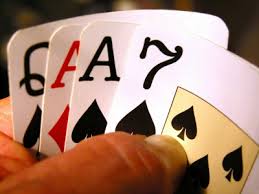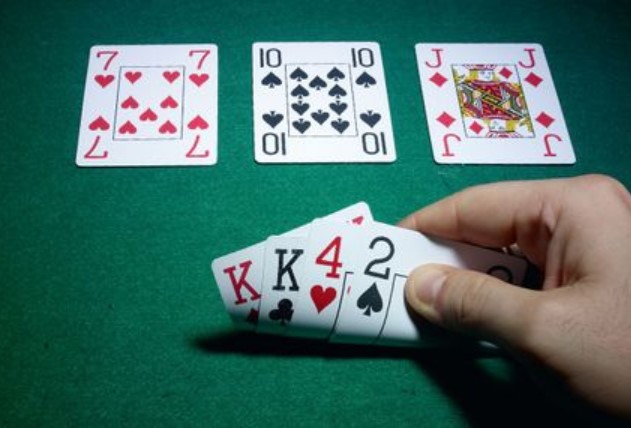Introduction to Outs in Omaha Poker

When players are first starting out in Omaha poker, they tend to overvalue hands like those with big pairs without giving much consideration to big drawing hands. The truth is that even the best starting hands in Omaha are not huge favorites and drawing hands can have huge equity depending on the draws.
Part of being able to identify strong drawing situations is understanding the outs involved in an Omaha game and how to spot big drawing situations. In this article, we will explain the different types of outs in Omaha and teach you about the different draws to look for.
Outs and Blockers
When considering your outs in Omaha, there are several types of outs that you need to be considering. The first is your standard outs. These are cards that can come to give you the best hand. If you have an open-ended draw and need a queen or seven to hit your straight, these are your outs.
Next are anti-outs. These are outs that normally would be an out to give you a hand, but it actually helps to improve your opponent’s hand. For example, if you were looking for a queen or a seven to hit a straight and your opponent is one a heart flush draw, then a queen and seven of hearts are actually anti-outs.

In this hand, you have blockers to a broadway straight but not much else.
Once you consider your outs and your anti-outs, this leaves you with your true outs. In the example we have been using so far, you subtract the two hears from your outs and you have six true outs.
Finally, you need to consider how many cards you have in your hand that serves as blockers. Blockers are cards that will actually take away outs from your opponent to make a hand. If the board is 6-7-8 and you have two nines in your hand, then you have two cards that your opponent would need to make a straight. You have two blockers for your opponent.
Drawing Hands
There are several drawing hands that are exclusive to Omaha where players have a high number of outs. Whether or not you have a strong knowledge of Omaha odds, if you are able to identify these hands, you will be able to draw more efficiently.
The first type of draw you need to watch out for is a wrap-around straight draw. With this hand, you have two cards that are above the connected cards on board and two that are below the cards on board. For example, if you have 10s-9s-6c-3d and the board is 7d-8c-2s, then you have a wraparound straight draw. Any jack, ten, nine, six, or five will make straight. In total, you have seventeen outs to make your hand.
If you have two cards above and two cards below the connected board cards, you have a double wraparound straight draw. If in the same example you staring hand was 10s-9s-6c-5d, you would still have the same outs before but would also have any four in the deck to go along with your outs. This gives you a total of 20 outs in your hand.
You also need to be looking for 13 out straights. These are hands where you have three cards above the connected board cards. If you had a hand like Q-J-10-9 and the flop was 8-7-2, any jack, ten, nine, or six that comes will give you a straight. This gives you 13 outs to your straight.
Never That Far Behind
Many hands that can develop into monster drawing hands do not look very impressive pre-flop and those coming over to the game from Texas Hold’em may be inclined to ignore these hands thinking that they are huge underdogs to big hands like A-A-K-K double suited or even hands liked K-K-J-T double suited.
The reality is that there are no hands in Omaha that are a huge underdog to even the top hands. For example, if you pick up a hand like 8s-7s-6c-5c, at first glance it does not look like much. It has weak flush capabilities and no pairs or high straight drawing power. If you were to look at As-Ac-Ks-Kc, you would think this to be a much stronger hand due to the two overpairs, the two broadway draws, and two nut flush draws. However, the hand is actually only a 3-2 favorite to win against the double suited rundown hand.
Where the equity in these hands comes into play is when you connect strongly on a board. When that 8-7-6-5 flop something like 4-5-6, players are going to be in great shape. The same is true if you had Q-J-8-7 and the flop comes 10-9-2. As such, you are never really that far behind in most hands in Omaha. That is one reason that Omaha is a game of big cards and big draws.
Many solid Omaha players do not know the odds in Omaha poker, but they do how to spot outs in Omaha. They constantly evaluate the board and can spot their blockers, anti-outs, calculate their true outs, and spot when they have monster drawing situations. By learning how to quickly spot these odds and situations, you will be able to cash in on huge drawing situations and increase your hourly rate.
